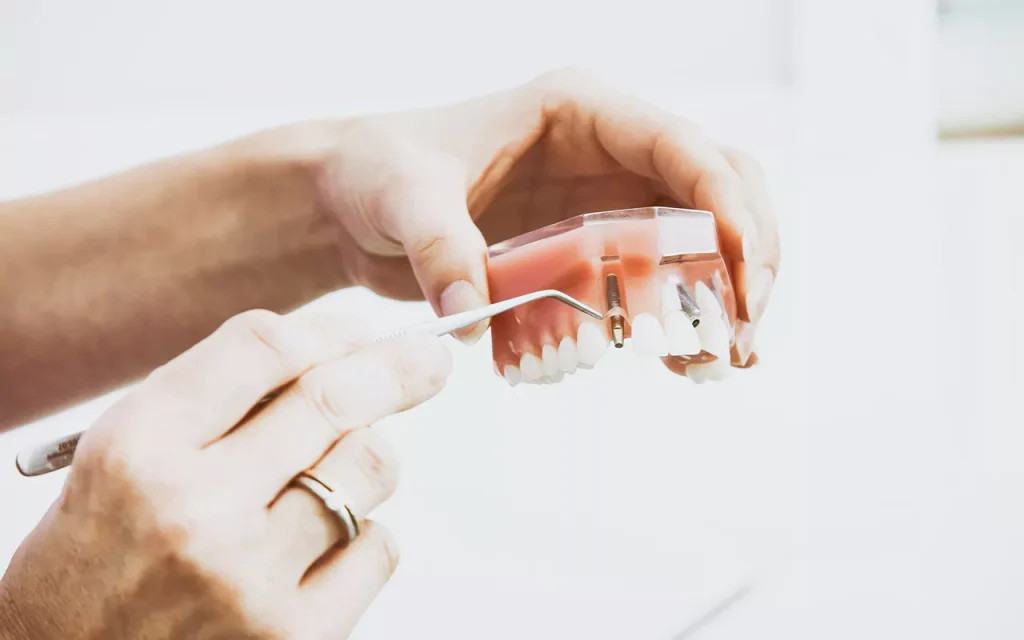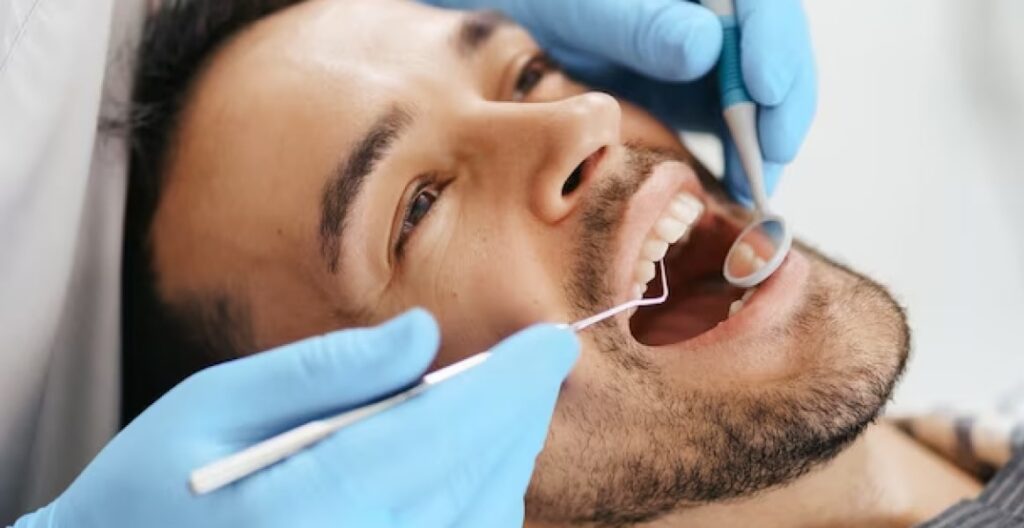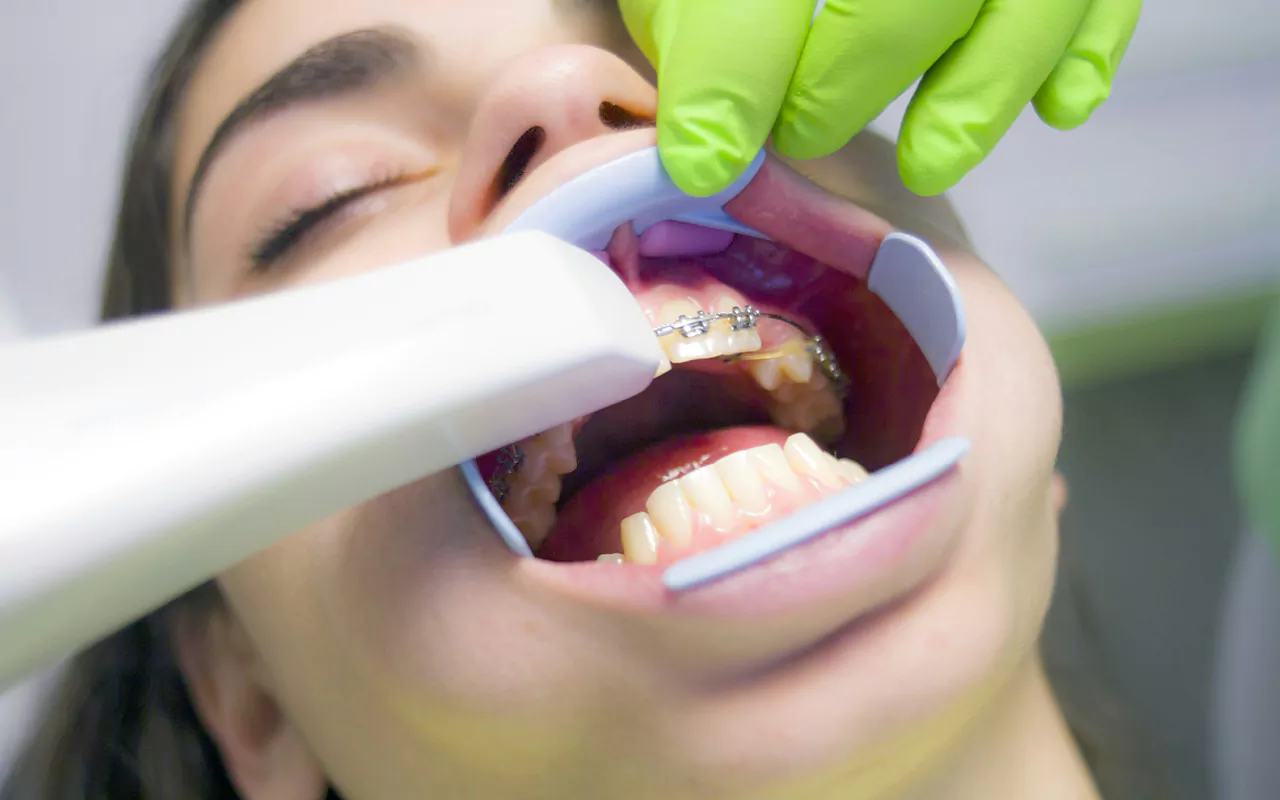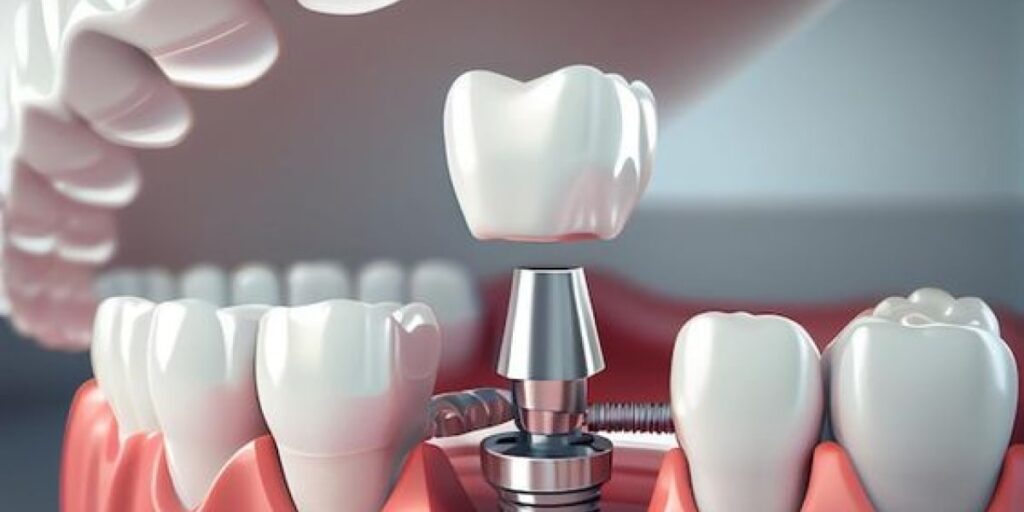What is Dental Composite?
Dental composite is a modern dental material used to repair and improve a wide range of tooth problems. This restorative material, which is a resin-based paste, can fix damage like fractures, decay, and cracks in teeth. Additionally, composite plays a big role in changing the size, shape, and even color of teeth.
Everyone wants a beautiful and appealing smile, and achieving this requires healthy, straight teeth. When you visit the dentist to fill cavities caused by decay, you often see a paste-like material—that’s the dental composite. This unique material, which has a color similar to natural teeth, is placed on the tooth surface and shaped by the dentist into the desired form.
Finally, a special light (usually blue light) is used to cure and harden this paste layer. This process causes the composite to polymerize and solidify, completing the tooth restoration. This technique not only fixes the tooth but also significantly boosts a person’s confidence by creating a natural and attractive appearance.
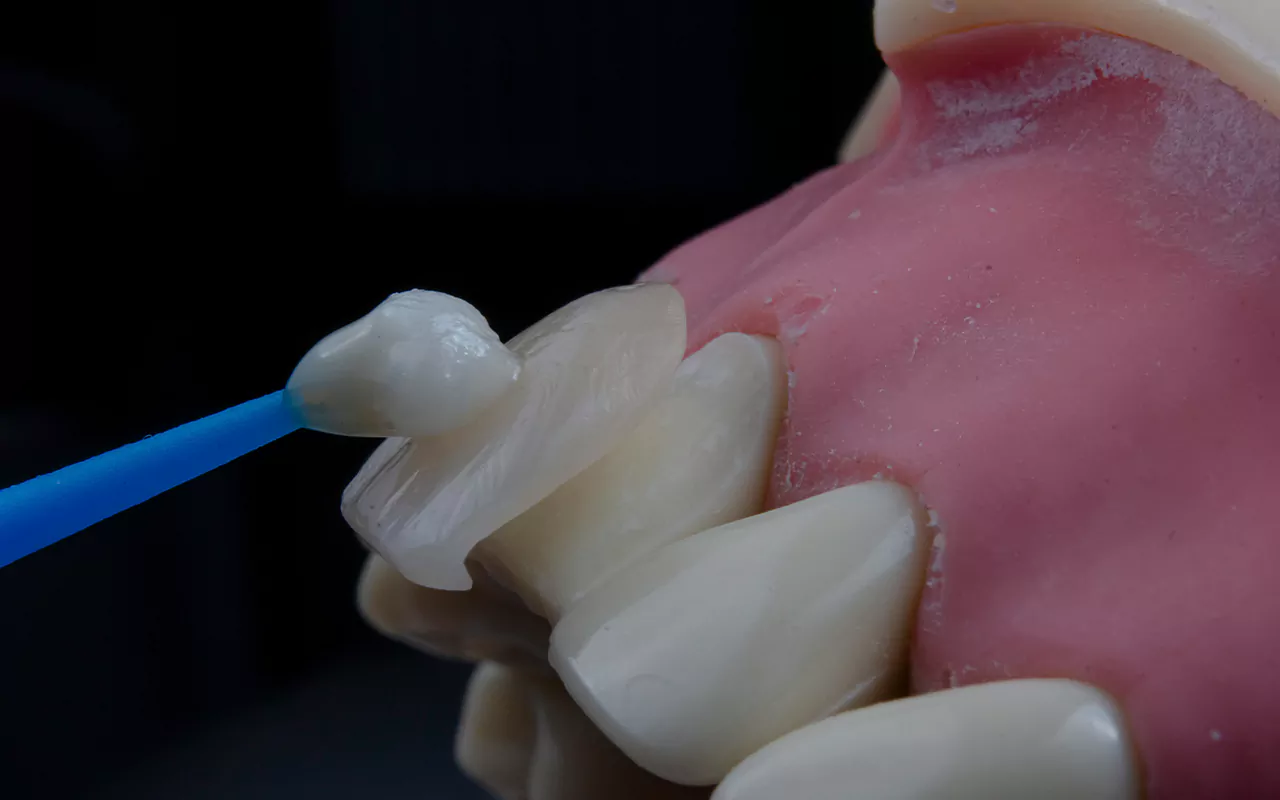
What is Composite and What is it Used For?
Dental composite is a versatile dental method used to correct many different tooth problems, including misalignment, poor shape, discoloration (like yellowing), chips, and gaps between teeth. A skilled and experienced dentist can effectively fix these flaws using the best available materials. After the dentist removes tooth decay, the dental composite is used as a filling material to repair the tooth structure and improve its look.
Composite veneers are specifically used for repairing and enhancing the appearance of the front (anterior) teeth. Even people with relatively healthy and straight teeth may choose this method simply to improve their tooth color and achieve a more attractive smile. A specialized restorative and cosmetic dentist will carefully examine the patient’s condition, evaluating their facial features, mouth, and teeth to recommend the best treatment option.
When someone shows too much gum while smiling or talking—a condition known as a “gummy smile”—it’s often due to short-looking teeth. Fortunately, thanks to advancements in dentistry, this problem is easily fixed. The treatment is done in the dental office under local anesthesia. The process involves slightly increasing the visible height of the gum and then applying a composite veneer to correct the smile line. This procedure ultimately boosts the patient’s confidence when talking and smiling.
If the “gummy smile” is caused by a short upper lip, other corrective approaches are considered, such as Botox injections or plastic surgery to change the lip’s position.
Dental composite is an economical method that doesn’t require shaving down the tooth. In the past, porcelain crowns or veneers were used to whiten teeth, which meant a significant portion of the tooth structure had to be removed. But today, with new methods, especially dental composite, this isn’t necessary, and the composite is simply bonded directly onto the tooth surface.
The entire process is completed in the dental office and doesn’t need to be sent to a lab. This helps ensure a better color match between the composite and the patient’s natural teeth.
Composite is an ideal choice for patients, especially younger ones, with crowded teeth. If the patient is dissatisfied or changes their mind later, the composite can easily be replaced with other options like dental laminates (veneers).
If the way the jaw and teeth meet (occlusion) is improper, the dentist will first recommend orthodontic treatment to straighten the teeth before moving on to other aesthetic and restorative procedures.
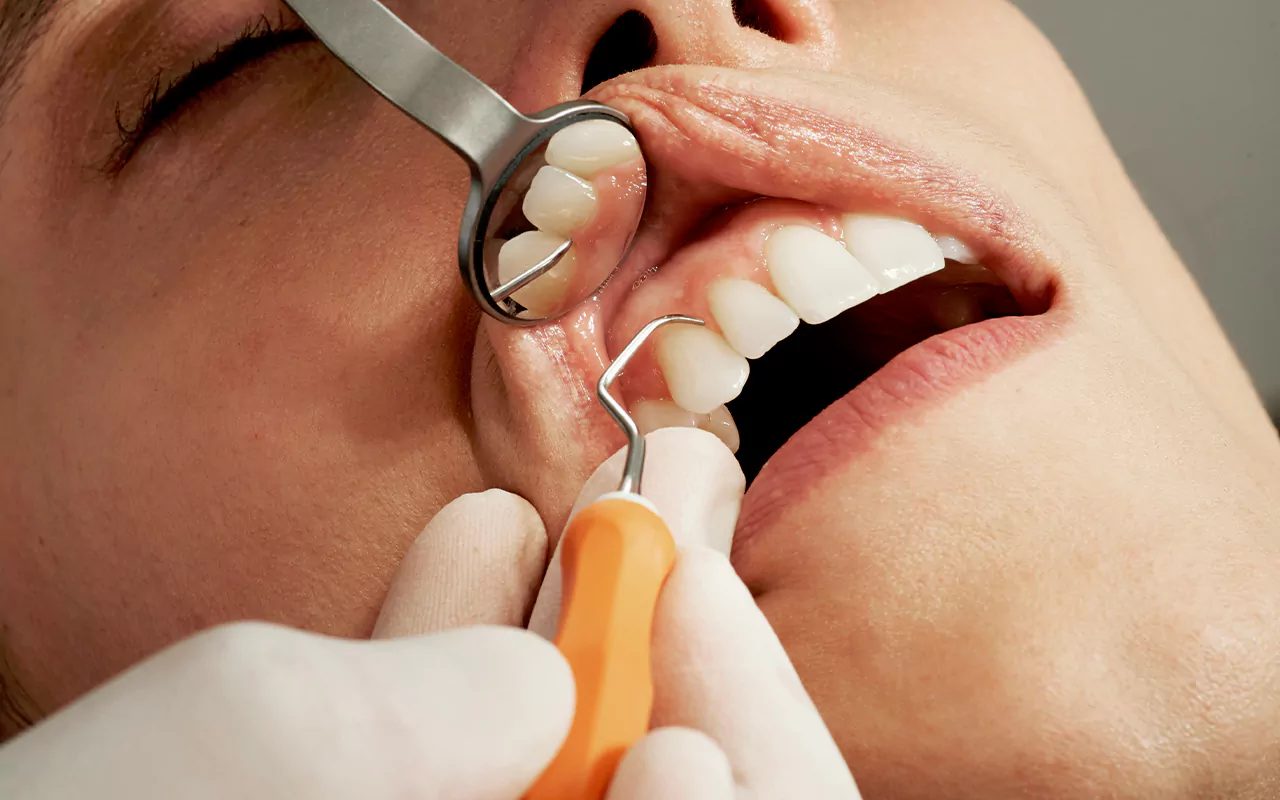
Necessary Care After Getting Dental Composite
After the composite bonding process, your teeth need special care. To keep the restorations beautiful and durable, following hygiene tips is crucial. Therefore, after having sodas or any colored foods and drinks, it is strongly recommended that you brush your teeth thoroughly and use dental floss regularly. This preventive action stops pigments from permanently sticking to the composite surface and causing discoloration.
It’s important to know that while dental composite is a durable cosmetic solution, it requires the individual to commit to good oral hygiene to increase its lifespan and preserve its appearance. However, if the composite breaks or chips due to eating hard foods or an impact, it can be repaired. This repair is done by the dentist using the same composite materials.
Strictly following oral hygiene principles plays a big part in preventing composite discoloration. If the color change is only on the surface, this problem can usually be fixed by the dentist by polishing the composite, which restores its original look. This process, which smooths the composite surface, removes minor stains and discoloration, bringing back the shine and beauty to your smile. By taking a preventive approach and caring for your teeth properly, you can enjoy the long-term benefits of dental composite.
What is the Best Brand of Dental Composite?
In the dental materials field, many brands produce dental composites, each offering unique features. Noteworthy Japanese brands include Gradia Direct, Geanial, and Kuraray. On the other hand, reputable American brands like Bisco, 3M, and Cosmedent are also leaders in this area. Additionally, Swiss brands such as Sarmico hold a special position due to the high quality of their products.
However, it must be acknowledged that the main difference between various composite brands is not limited to the brand itself; the dentist’s skill and technique in using these materials play a crucial role in the final quality of the work. Most reputable brands meet necessary standards and undergo strict quality control procedures. Therefore, even when using the best type of composite, if the dentist lacks sufficient skill, the desired outcome may not be achieved, and even poor results could occur.
One important point about dental composite is the potential complications resulting from improper placement. If the composite is not correctly adapted to the gum line, it can lead to serious damage to the gum tissue. Thus, choosing an experienced and specialized dentist is extremely important. This informed choice can prevent unwanted complications and ensure a satisfactory treatment result.
At Dr. Sherafati Dental Clinic in Gorgan, an experienced and specialized team in restorative and cosmetic dentistry provides high-quality services to patients, utilizing the best and most up-to-date materials available worldwide. The goal of this center is to gift you, dear patients, with a beautiful and attractive smile. This clinic strives to provide the best cosmetic and restorative dental services by combining modern knowledge with the experience of specialists.
Benefits and Drawbacks of Dental Composite
Composite is widely used in different areas of dentistry because its color perfectly matches the natural structure of teeth. This restorative material is also known as a dental composite veneer or dental composite bonding, and it plays a major role in the overall rebuilding of a tooth (build-up) or fixing its aesthetic flaws and irregularities. A veneer is essentially a thin shell or layer that covers the surface of the teeth, giving them a new look.
One of the significant benefits and uses of dental composite is its ability to create fundamental changes in the appearance of teeth. This dental material can improve tooth color and significantly help with the minor correction of their form and shape. In addition to these cosmetic uses, composite is also used to repair damaged tooth structure and can be used as a filling material for cavities caused by decay or fractures.
However, like all dental treatments, this procedure also has limitations and drawbacks, which we will discuss in detail later. This comprehensive review will help you better understand the method and make a more informed decision.
Advantages of Dental Composite
You can create a remarkable transformation in your smile using dental composite. It’s interesting to know that many people aren’t fully satisfied with the look of their teeth when they smile or laugh. Improving your smile design brings multiple benefits to every individual because the visual beauty of a smile significantly affects their mental health and psychological well-being. The better people feel about their appearance, the more their self-confidence increases. This is effective not only in social interactions but also in various aspects of personal and professional life.
To improve the appearance of teeth and achieve an ideal smile, two common methods are usually used in cosmetic dentistry. The first approach is using dental composite, which is known as a minimally invasive and cost-effective method. The second method uses porcelain laminates (veneers), which are a better option for more substantial dental corrections due to their higher durability and strength.
Each of these methods, depending on the patient’s specific condition and the dentist’s diagnosis, can yield desirable and noticeable results. Choosing the right method requires a careful examination of the tooth condition and consultation with experienced specialists in this field.
Drawbacks of Dental Composite
Alongside its many benefits, dental composite also comes with certain limitations and challenges that you need to know about to make an informed choice and manage your expectations. One common issue people face over time is discoloration and staining on the composite surface. This problem, also known as “discoloration,” can be caused by various factors.
Specifically, people who frequently consume colored foods and beverages (like coffee, tea, soda, and certain spices) are more likely to face this issue. The pigments in these substances can gradually seep into the composite surface and cause it to change color.
This discoloration can range from a slight shade change to noticeable stains, depending on the type and amount of colored substances consumed. Therefore, maintaining good oral hygiene and avoiding excessive consumption of colored items plays a major role in preserving the composite’s color and beauty. Also, regular polishing of the composite by the dentist can help remove surface stains and restore its shine.
The Disadvantages of Dental Composite
Despite the significant popularity and growing acceptance of dental composite among the public due to its aesthetic appeal, it still has notable limitations and negative aspects, which we will now discuss. One such limitation, which becomes particularly clear when comparing it to porcelain veneers (laminates), is its relatively shorter lifespan. In other words, the durability and longevity of dental composite are lower compared to ceramic laminates, making this a key disadvantage.
Furthermore, the resin materials that make up the composite are susceptible to absorbing various stains and experiencing discoloration. This characteristic can diminish the composite’s initial beauty and attractiveness over time, necessitating repolishing or even replacement. Another limitation of this dental enhancement method is the potential for the final work to feel or look too bulky or prominent.
This bulkiness, sometimes referred to as “overcontouring,” is caused by the fact that the teeth are not trimmed or filed down during the composite procedure. Because the composite is bonded directly onto the tooth surface, its volume might increase slightly. This is especially noticeable when correcting the shape or size of teeth. In some cases, this issue can result in an uneven or undesirable appearance.
Review of Potential Complications and Challenges Related to Dental Composite

Composite Fracture:
As we know, the main material that makes up dental composite is resin. This material is less strong compared to other restorative materials like amalgam and ceramic. Therefore, there is a risk of it breaking or chipping from pressure, such as chewing hard foods. This vulnerability is an inherent limitation of composite.
Composite Discoloration (Staining):
Another potential drawback of dental composite is its tendency to change color and yellow over time. Since a primary goal of using composite is to improve the teeth’s appearance, this discoloration can be frustrating for patients. To maintain the original color and shine, it is recommended that composites be polished periodically by a dentist, typically once or twice a year. This procedure removes surface stains and restores the initial look.
Tooth Decay (Adjacent to Composite):
Tooth decay is one of the most significant potential complications associated with composite and affects many patients. Individuals who have dental composites must pay serious attention to their oral hygiene. Failure to maintain proper hygiene can lead to plaque buildup and, consequently, tooth decay right next to the composite restoration.
Tooth Sensitivity:
The use of composite can sometimes cause teeth to become sensitive to hot and cold. This sensitivity is usually temporary, but in some cases, it might last for up to a month or even longer. If the sensitivity continues, it is recommended to see a dentist for examination and treatment.
Misalignment of Teeth (Occlusion Issues):
Since the goal of dental composite is to correct the shape and size of teeth, issues related to the improper alignment of the teeth with each other (malocclusion) can sometimes occur. This misalignment can cause discomfort for the patient during daily activities like speaking, laughing, and eating.
Gum Inflammation and Swelling (Gingivitis):
Gum inflammation and swelling, known as gingivitis, is a common side effect related to dental composite and usually happens because of the way the procedure is performed. This condition is typically not serious and can be easily treated by visiting the dentist. However, maintaining good oral hygiene and having regular dental check-ups can prevent these issues from happening.
Comparing Dental Composite and Tooth Bleaching
Composite and bleaching are both performed to improve the aesthetics and appearance of teeth, but they are fundamentally two different approaches in cosmetic dentistry. When a tooth changes color, decays, or becomes damaged, the dentist first carefully removes the decayed part and then fills the tooth using appropriate restorative materials. Following this, the tooth surface is professionally covered with composite material in specialized stages to achieve the desired shape and color. This process not only restores the tooth but also significantly improves its look.
In the tooth bleaching (whitening) method, the surface of teeth that have yellowed or become discolored is made several shades lighter using special agents. This technique, which should ideally be performed exclusively by dental professionals (not in beauty salons or by the individual themselves), involves applying specific whitening gels. These materials penetrate the enamel structure, break down the existing pigments, and cause the teeth to lighten.
To achieve brighter teeth and obtain optimal whitening results, a combination of these two methods can be used. For example, if a person plans to get dental composite, the dentist might recommend that the bleaching process be done first. This allows the dentist to select the composite color more accurately and to match the newly whitened teeth. The crucial point is that once the chosen composite is placed on the teeth, its color cannot be changed. Therefore, selecting the appropriate color at the beginning is extremely important.
Comparing Dental Laminates (Veneers) and Dental Composite
A ceramic laminate (veneer) is a thin layer made of porcelain (a type of high-quality ceramic). It is custom-made in a dental laboratory after a precise impression is taken of the patient’s teeth. This thin, strong shell is then placed on the outer surface of the tooth and bonded using special materials. The natural transparency of ceramic laminates gives them a completely natural appearance, similar to tooth enamel, resulting in striking beauty.
In contrast, a composite veneer is an engineered white resin that is applied directly to the outer surface of the tooth. This paste-like material is shaped by the dentist using specific techniques and cured (hardened) with a special light. The resin’s color in the composite veneer is carefully matched to the patient’s natural tooth color to achieve a seamless and natural look.
In terms of coverage and repair, a ceramic laminate is capable of filling larger spaces compared to a composite veneer. Therefore, in all cases where the dentist approves the use of a veneer, ceramic laminates can be used to fix a wide range of dental flaws, from minor issues to severe damage. If ceramic laminates are placed on the teeth of both the upper and lower jaws, the process of tooth whitening (bleaching) will no longer be necessary, as the desired color and brightness are provided by the laminates themselves.
Conversely, the composite veneer, due to limitations in its bulk and strength, cannot fill wide gaps between teeth. In cases where the space between teeth is large, the teeth are significantly short, or a large portion of the tooth is broken or cracked, composite veneers are not recommended. This method is typically best suited for more minor cosmetic issues, such as small cracks in the enamel, mild tooth discoloration, or slight misalignment between the teeth.
Does Composite Make Teeth Stick Out?
You may have heard that dental composite can cause teeth to look too bulky or stick out. Here, we will look closely at this issue and the factors that cause it. One potential problem that some people might face after this procedure is the unnatural and excessive forward projection of the teeth. This phenomenon, also known as “protrusion,” can negatively affect both the appearance and function of the teeth.
The most important factor contributing to this problem is the lack of precision and skill on the part of the dentist during the procedure. When the thickness of the composite layer is applied beyond the normal and standard limit, the problem of dental bulkiness occurs. This excessive thickness not only results in an unnatural, protruding appearance for the teeth but can also cause an unpleasant and artificial feeling in the person’s mouth. Furthermore, this situation can lead to irritation and inflammation of the gum tissue (gingivitis), which brings its own set of complications.
It is important to note that dental composite is not suitable for everyone, and the decision should be made solely by a specialized dentist after a thorough examination. For example, individuals who naturally have teeth that are already prominent relative to their gums, or those with irregular teeth (malocclusion), are not considered suitable candidates for composite bonding. In these cases, other treatment methods, such as orthodontics or ceramic laminates, might be more appropriate options. Therefore, consultation with a specialized dentist is essential before proceeding with any action.
Does Composite Cause Tooth Decay?
You’ve probably heard that dental composite can lead to tooth decay. Here, we will take a close look at this topic and its scientific explanation. One of the main reasons some people experience tooth decay after getting composite is a reduction in, or neglect of, their oral hygiene practices. This carelessness with mouth care can lead to several problems.
In reality, the composite itself is not the cause of decay; rather, the way the procedure is done and the post-treatment hygiene play the decisive role. Because the dentist might slightly trim a small part of the tooth enamel (the hardest tissue in the body) to create a suitable surface for bonding the composite, a microscopic space can be created between the edge of the composite and the gum. This space, also called the “margin,” is prone to collecting food particles and dental plaque if proper hygiene isn’t maintained.
The buildup of food in this tiny space creates an ideal environment for bacteria to grow and multiply. Over time, the activity of these bacteria and the acid they produce can lead to tooth decay in the area next to the composite. Also, even a small amount of enamel trimming can make the tooth more vulnerable to mechanical damage like chipping. Therefore, maintaining good oral hygiene—including correct brushing, flossing, and using mouthwash—is extremely important after getting composite and can prevent decay and other potential complications.
Does Composite Cause Bad Breath?
Dental composite is not, by itself, the cause of bad breath (halitosis). However, several factors can contribute to this unpleasant phenomenon. This issue is so common that some people avoid getting dental composite because of it. Here, we will examine these factors closely and offer appropriate solutions.
One of the main reasons for bad breath after composite bonding is the neglect of personal hygiene and the failure to use a toothbrush and dental floss correctly and regularly, especially after meals. Leftover food particles in the mouth create a suitable environment for bacteria to grow and multiply. This leads to the production of volatile sulfur compounds and, consequently, bad breath. If you have a history of smoking, you should also expect bad breath, as tobacco use, in addition to causing serious general health issues, can worsen tooth decay and directly contribute to halitosis.
Another factor that is beyond the patient’s control is the dentist’s lack of precision and skill during the composite procedure. Besides the practitioner’s expertise, the quality of the materials used is also very important. Using poor-quality or non-standard materials can lead to problems like the improper fit of the composite with the tooth structure and gums.
If the gap between the gum and the composite is larger than the standard limit (known as an “overhang” or “excess margin”), the accumulation of bacteria and food particles in this space increases. This eventually leads to tooth decay and the creation of unpleasant breath. Therefore, choosing a specialized and experienced dentist, as well as maintaining meticulous oral hygiene, are key factors in preventing this problem.
Regret After Getting Dental Composite
Despite its significant popularity among those seeking cosmetic dental enhancements, dental composite is often accompanied by patient worries and concerns. Many people who are interested in this dental procedure avoid going through with it because they fear potential side effects and damage to their tooth structure. In this discussion, we will closely examine these concerns and the factors that contribute to them.
One of the most important reasons people regret getting composite is the reduced resistance of the teeth to the pressures from chewing and eating, which eventually requires the composite to be repaired or replaced. This drop in resistance can stem from various factors, including the dentist’s poor technique in placing the composite, the low quality of materials used, or the patient’s failure to follow post-treatment care instructions.
To prevent the issues mentioned above, following certain advice is essential. This includes avoiding the excessive consumption of harmful foods and drinks that contain food colorings. These pigments can gradually penetrate the composite surface and cause it to discolor or stain over time. Another factor that can lead to patient dissatisfaction and regret is the dentist’s lack of sufficient skill in performing the composite procedure.
Since the composite veneer technique is highly sensitive and precise, and its placement is done directly on the tooth surface, it requires special accuracy and skill from the dentist. Therefore, choosing a reputable dental clinic and an experienced, specialized doctor is extremely important and can prevent many potential problems and regrets. Making an informed choice guarantees a desirable and satisfying result.
Is Dental Composite Permanent?

As stated, the useful life of dental composite is typically between 5 to 7 years, and composite dental restorations are not a permanent solution for aesthetic smile correction; they must be replaced or repaired after a period. However, by practicing proper care, you can significantly extend the lifespan of your dental composite.
Extending the Lifespan of Dental Composite
Visiting a specialized and experienced dentist.
Using a high-quality composite brand.
Avoiding chewing hard foods.
Reducing the consumption of highly pigmented foods (stain-causing).
Visiting the dentist every 6 months for a check-up.
Maintaining excellent oral hygiene.
What Not to Eat After Getting Dental Composite?
One of the most critical steps to follow after getting a dental composite procedure is maintaining a balanced and appropriate diet. Carelessness with food can lead to serious damage to the composite restorations. Fractures, chipping, cracking, separation from the tooth surface (debonding), and similar damages are all complications whose risk increases due to improper care and poor diet. Following a disciplined diet not only helps maintain healthy teeth but also guarantees the beauty and durability of the composite restorations in the long term.
However, the intention behind advising a diet is not to impose severe or total restrictions on the types of food consumed. Rather, the goal is to increase awareness and attention to how to care for the teeth and to avoid the consumption of certain specific food items. Specifically, it is recommended to avoid hard and sticky foods, acidic beverages (like sodas and processed juices), and foods containing artificial pigments (like some sweets and candies).
These substances can damage the composite or cause it to discolor due to their physical and chemical properties. For instance, hard foods can cause cracks or fractures in the composite, while acidic drinks and artificial pigments can cause staining and color change on its surface. Therefore, by adopting dietary precautions, you can enjoy the beauty and longevity of your dental composite for a longer period.
What to Eat After Getting Dental Composite?
Paying attention to your daily diet is crucial to prevent the composite restorations from cracking, breaking, or changing color. The type and method of consuming foods and beverages directly affect the lifespan and aesthetics of the dental composite. Therefore, following some dietary tips can greatly help maintain the health and durability of these restorations.
It is recommended to eat soft foods at a moderate temperature. In other words, avoid foods and drinks that are extremely hot or extremely cold. Sudden temperature changes can create stress within the composite structure, leading to cracking or separation from the tooth surface.
You should also be careful about your choice of drinks. Instead of processed juices, which often contain artificial pigments and strong acids, opt for natural and fresh juices. The artificial colorings in industrial drinks can gradually penetrate the composite surface and cause it to change color.
Regarding bread, consuming soft bread without a hard crust is advised. Avoid hard breads like rusks, toasted bread, and other breads with a dry, hard texture. These types of breads can cause the restoration to break or chip due to the excessive pressure they put on the teeth and composite during chewing.
When eating chocolate, pay attention to its texture. Soft chocolates without hard pieces are a better option. Avoid sticky chocolates like taffies and chewy nougat, which cling to the tooth and composite surface. These sticky substances can not only cause the composite to detach but also create a suitable environment for bacteria and tooth decay.
Preventing Dental Composite from Yellowing
Unfortunately, many people do not pay enough attention to the necessary post-treatment care after getting dental composite. This negligence and lack of attention can lead to a change in the teeth’s appearance and unpleasant discoloration, including the composite turning yellow. To prevent this issue and maintain the beauty and durability of the composite restorations, oral hygiene and adopting a healthy lifestyle are vital. Keeping teeth clean and regularly using a toothbrush and floss are essential steps in this regard.
One of the best habits you can adopt to protect the health and beauty of your teeth is to quit smoking, especially cigarettes. Smoking has a direct and damaging effect on tooth color and can cause them to yellow and stain. This effect is also visible on the composite and can diminish its brightness and beauty.
In addition, it is recommended to avoid excessive consumption of certain foods and drinks that are specifically harmful to the teeth as much as possible. Dark sauces, coffee, black tea, red-colored beverages, starchy foods like pasta, candies, and colored sweets are all common factors that can harm teeth and composite.
Due to their strong pigments or acidic nature, these substances can cause discoloration, staining, or even damage to the composite structure. Therefore, by taking a preventive approach and adhering to hygiene and dietary advice, you can enjoy the beauty and durability of your dental composite for a longer period.
Removing Dental Composite
People may wish to have their dental composite removed for personal reasons. The costs of removing dental composite can vary depending on the condition of the patient’s teeth. To do this, the dentist must examine the condition of your teeth. There are different methods for removing composite. This can be done using sanding discs, carbide burs, or the abrasion method.
Can Dental Composite Be Removed?
The removal of dental composite can be performed using various techniques. However, it is strongly recommended that this procedure be undertaken only when necessary and unavoidable. Replacing composite veneers, especially if the underlying natural tooth structure has been damaged, can be an expensive and time-consuming process. Therefore, properly maintaining the composites and avoiding their unnecessary removal is of high importance.
Sometimes, the improper placement of the veneer on the tooth surface forces the individual to have it replaced. Factors such as the composite not fitting correctly with the gum line, the creation of an overhang (excess margin), or the presence of air bubbles beneath the composite layer can lead to problems that make veneer replacement necessary.
Furthermore, issues like chipping, complete or partial fracture of the composite, trauma to the tooth, and changes in the veneer’s shape or structure due to various factors (such as stress from teeth grinding or chewing hard materials) are among the reasons that necessitate composite replacement. In such situations, the dentist will carefully assess the condition of the tooth and the composite to determine the best method for its removal and replacement.
Complications of Dental Composite Removal
If you are considering having your dental composite removed, you may have concerns about the side effects of this procedure. Generally, there is no single, specific, or definite complication directly associated with composite removal. However, some individuals report experiencing dental sensitivity after the procedure. This sensitivity, which is usually temporary, can manifest as a reaction of the teeth to temperature changes (hot and cold) or specific foods.
Other potential complications of composite removal often appear as tooth decay or dullness (reduced translucency) of the underlying natural tooth enamel. These issues are typically the result of an improper composite removal technique or a failure to maintain proper hygiene afterward. If a person continues to feel pain or discomfort in their teeth after the composite is removed, it is essential to inform their dentist so that necessary examinations can be performed and appropriate treatment prescribed if needed.
If you plan to have your dental composite removed in the future, it is recommended that before the initial composite procedure, you ask your dentist to avoid trimming the tooth enamel as much as possible during surface preparation. This preventive measure can significantly reduce the likelihood of post-removal complications, such as sensitivity and decay. Essentially, preserving the natural tooth structure is the best way to prevent potential problems down the line.
For Correcting Tooth Irregularities, is Composite or Dental Orthodontics More Suitable?
The answer to this question requires an assessment of multiple factors and cannot be easily summarized. The correct treatment method must be determined by the doctor after examining the condition of the teeth and first diagnosing the degree of tooth irregularity. If the level of irregularity is minor, composite can be used to fix it, but if the level of irregularity is significant, the only method for correction is dental orthodontics.
Does Composite Veneer Have the Same Functionality as Composite?
In answer to this question, composite veneers are a type of dental composite used to fill gaps between teeth or treat fractures in front teeth. The reason composite veneers are used on front teeth is that this type of composite has a more natural color, and its use will not draw unwanted attention.
Based on the points mentioned, the answer to the question is that composite veneers not only perform the functions of regular composites but also offer advantages over them. Therefore, you should not have any concerns regarding the functionality of this type of composite.



